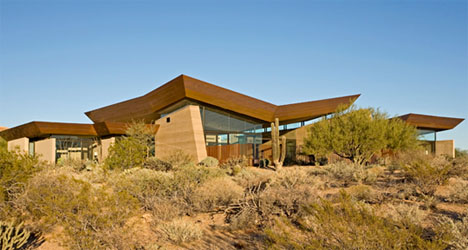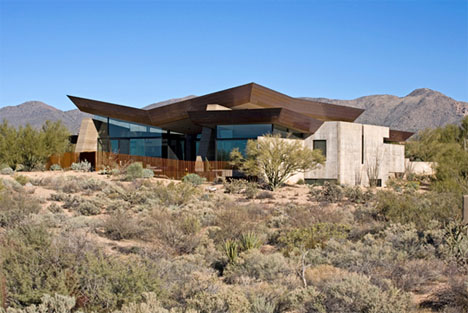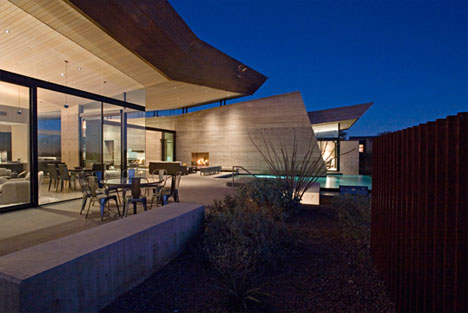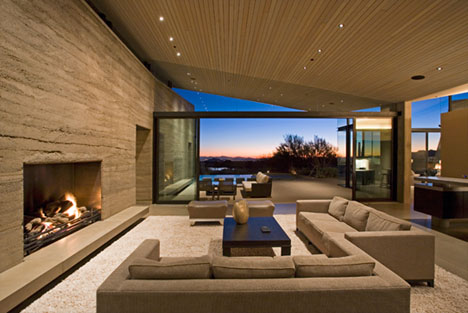That idea of using mud straight from the Earth – rammed into brick shapes or layered in rows – is one of the oldest building techniques known to humanity.
The recent resurgence of interest in red-and-brown ‘rammed-earth’ building designs may be a ‘green’ trend … but it is also a brilliant (and beautiful) way to save money by factoring local materials, and cheap construction techniques older than written history into even simple home plans.
Whether formed first into clay bricks or layered within forms (often used for on-site concrete construction), the naturally variegated textures and local earthen colors in rammed earth buildings become a core part of the aesthetic when a structure is finished.
In areas like Arizona where dirt and mud are far more plentiful than wood or stone, people turn to this classic building method out of necessity but also find that the designs can blend in remarkable ways with their surrounding environments. The
Kendle Designs residence pictured here, for example, shows how creative use of sweeping planes and thin horizontals can tie architecture to the landscape in evocative ways.
Inside of this home, the thick walls provide natural insulation and thermal energy storage – absorbing heat from the sun during the day to be released slowly at night in the summer and keeping the inside warmth from leaving in cold winter months.
http://dornob.com/rammed-earth-house-brown-red-brilliant-green-design/





Δεν υπάρχουν σχόλια:
Δημοσίευση σχολίου